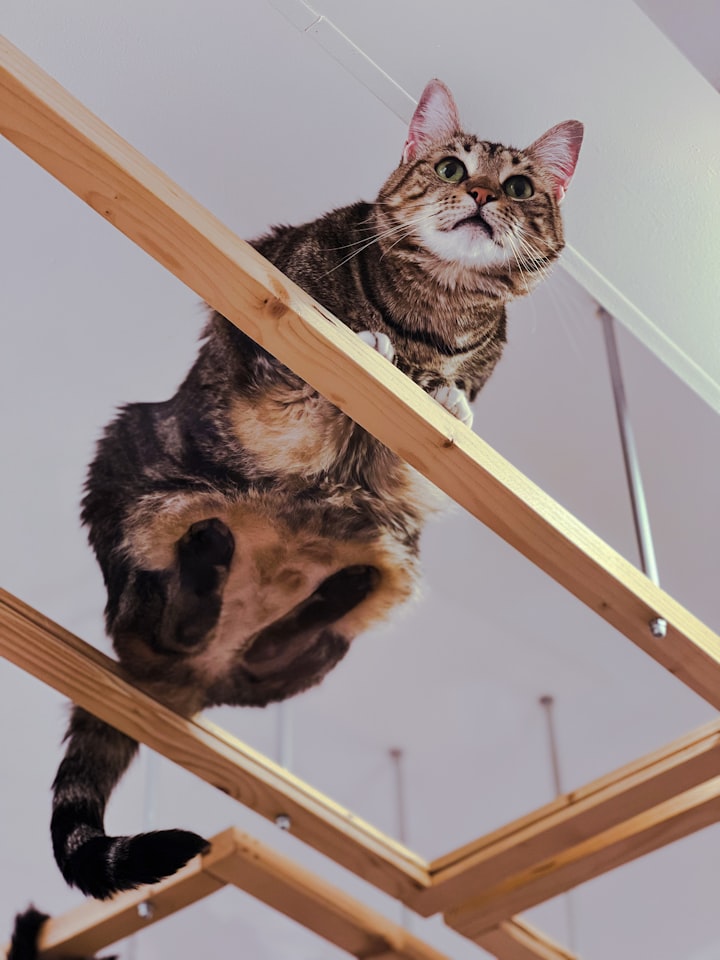5 Tips for Dealing with Common Cat Behaviors
The first step in managing your cat’s behavior is to identify the root cause.

Cats are beloved members of the family and make fantastic companions. But just like any other pet, cats can sometimes exhibit behaviors that may seem strange or confusing. Scratching furniture, meowing in the middle of the night, and hiding are all behaviors that can be difficult to manage. Fortunately, with a few tips and tricks, you can learn how to better understand and manage your cat's behavior.
- The first step in managing your cat’s behavior is to identify the root cause. Cats are creatures of habit and they often act out in response to something that’s changed in their environment. If your cat is exhibiting a new behavior, try to identify what has changed in their environment. It could be something as small as a new piece of furniture in the house, or a change in the daily routine. Once you’ve identified the root cause of the behavior, you can start to take steps to address it.
- The second step in managing your cat’s behavior is to provide them with an appropriate outlet for their natural behaviors. Cats are naturally curious and active creatures, and if they’re not given an appropriate outlet for their energy, they may take it out on your furniture or belongings.
The five tips for dealing with common cat behaviors include:
- Identifying the root cause of the behavior: Understanding the cause of the behavior can help you to better manage it.
- Providing an appropriate outlet for natural behaviors: Allowing your cat to express their natural behaviors and instincts can help to reduce unwanted behaviors.
- Providing plenty of stimulation and enrichment: Keeping your cat entertained and engaged can help to prevent destructive behaviors.
- Using positive reinforcement and rewards: Reinforcing good behaviors with rewards and treats can help to encourage more desirable behaviors.
- Seeking professional help if needed: If you are having difficulty managing your cat's behavior, seeking the assistance of a professional can help.
Providing an appropriate outlet for your cat's natural behaviors is also important. Allowing them to express their natural behaviors and instincts can help to reduce unwanted behaviors. This includes providing them with plenty of stimulation and enrichment. Cat toys, scratching posts, and interactive puzzle toys can all help to keep your cat entertained and engaged, and can help to prevent destructive behaviors.
Using positive reinforcement and rewards is also an effective way to encourage desirable behaviors. When your cat exhibits a behavior you want to encourage, such as using their scratching post, give them a treat or verbal praise.
- Providing an appropriate outlet for natural behaviors: Allowing your cat to express their natural behaviors and instincts can help to reduce unwanted behaviors.
Providing an appropriate outlet for your cat's natural behaviors is an important step in managing their behavior. Cats are naturally curious and active creatures, and if they're not given an appropriate outlet for their energy, they may take it out on your furniture or belongings. To prevent this, provide your cat with plenty of stimulation and enrichment, such as scratching posts, interactive puzzle toys, and a variety of toys to keep them entertained.
Additionally, it's important to provide your cat with plenty of space to explore and roam. Allowing your cat to roam and explore their environment can help to reduce stress, which in turn can reduce unwanted behaviors.
Finally, cats need a safe place to retreat. Cats feel most secure when they can hide away from the rest of the household, and it's important to provide them with a quiet place where they can retreat to when they need some alone time. Providing your cat with a safe place to retreat to can help to reduce stress and provide them with a sense of security.
- Providing plenty of stimulation and enrichment: Keeping your cat entertained and engaged can help to prevent destructive behaviors.
Providing plenty of stimulation and enrichment for your cat is essential in helping to prevent destructive behaviors. Cats are naturally curious and active creatures, and if they're not given an appropriate outlet for their energy, they may take it out on your furniture or belongings. To prevent this, provide your cat with plenty of stimulation and enrichment, such as scratching posts, interactive puzzle toys, and a variety of toys to keep them entertained.
Giving your cat access to a window or balcony can also help to keep them entertained, as they can watch the world around them and observe different animals and activities. Regular playtime with your cat can also help to engage them and provide them with an outlet for their natural predatory instinct. Additionally, providing your cat with an appropriate diet and plenty of water can help to ensure that they are getting all the necessary nutrients and hydration, which can help to support their overall health and wellbeing.
- Using positive reinforcement and rewards: Reinforcing good behaviors with rewards and treats can help to encourage more desirable behaviors.
Using positive reinforcement and rewards can be an effective way to encourage desirable behaviors in cats. When your cat exhibits a behavior you want to encourage, such as using their scratching post or coming when called, give them a treat or verbal praise. This will help your cat to associate the behavior with something positive, and they will be more likely to repeat the behavior in the future.
You can also use rewards and treats to help teach your cat new behaviors. For example, you can use treats to reward your cat for sitting or lying down on command. By providing your cat with positive reinforcement and rewards, you can help to encourage them to engage in desirable behaviors and discourage them from engaging in undesirable behaviors.
- Seeking professional help if needed: If you are having difficulty managing your cat's behavior, seeking the assistance of a professional can help.
If you are struggling to manage your cat's behavior, it may be time to seek the help of a professional. Animal behaviorists and veterinary behaviorists are both trained to help identify the root cause of the behavior and provide guidance and advice on how to address and manage it. An animal behaviorist can provide you with advice on how to modify your cat's behavior, while a veterinary behaviorist can provide more in-depth advice and even prescribe medications if needed.
By seeking professional help, you can get the advice and assistance you need to manage your cat's behavior in a safe and effective way. Professional help can also provide you with the knowledge and skills needed to create a safe and comfortable environment for your cat, which can help to reduce stress and anxiety and promote positive behavior.
About the Creator
Michael Anthony
Blogger/Content Creator
frequently asked questions https://insidertrends.com.ng
Exclusive Sports Stories
https://buzzhint.com






Comments
There are no comments for this story
Be the first to respond and start the conversation.